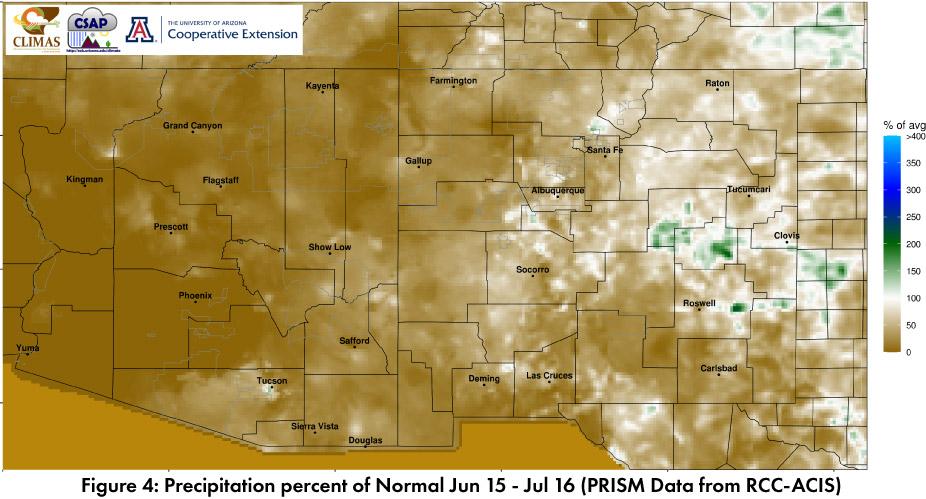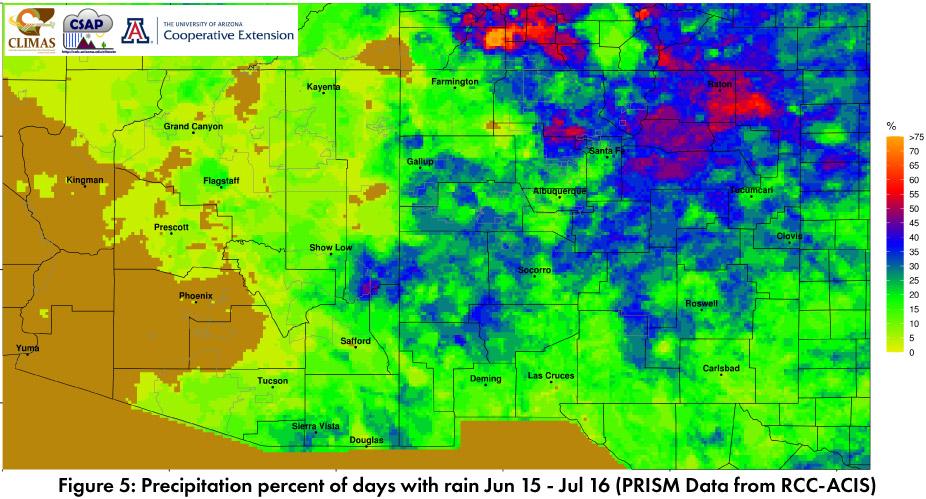Monsoon Recap - July 2019
Given the spatial variability of the monsoon, single weather stations are an imperfect measure. For example, if it rains at the station and not in surrounding areas or vice versa. They do provide an opportunity to track long term averages compared to the current year. Figure 1 compares 2019 precipitation to date with 2018 and climatology. This reveals 2019 is lagging behind average in terms of precipitation and is also a significant departure from 2018's widespread activity by mid-July. Dewpoint temperatures and daily precipitation for the same five stations (Fig. 2) illustrate that while increased dewpoint temperatures do not guarantee monsoon precipitation, it is rare to see monsoon precipitation in the absence of these elevated dewpoint temperatures.
Regional monsoon precipitation totals (Fig. 3) demonstrate a relatively slow start, with most of the Southwest lagging behind average accumulated precipitation through mid-July (Fig. 4). There is still plenty of time however, since monsoon activity typically intensifies in July and August, and with many locations experience their monsoon midpoint* in August. An early start can boost cumulative totals, but a late start does not necessarily mean decreased activity over the entire monsoon.
Online Resources
- Figures 1-2 - Climate Assessment for the Southwest - climas.arizona.edu
- Figures 3-5 - Climate Science Applications Program - cals.arizona.edu/climate/misc/SWMonsoonMaps/current/swus_monsoon.html






